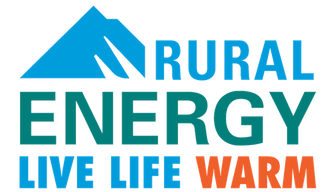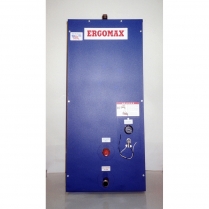Ergomax Product Range We Carry:
Rural Energy Enterprises proudly offers the Ergomax E23 Heat Exchanger, a versatile solution tailored for Alaska’s unique energy challenges.
Ergomax E23 Heat Exchanger:
The Ergomax E23 is suitable for most residential applications and can handle boilers with an output of up to approximately 200,000 BTU. Its robust design makes it suitable for new installations or retrofits, ensuring seamless integration with existing heating systems.
Key Features & Benefits:
- Instantaneous Hot Water: Delivers hot water on demand without the need for a storage tank, utilizing advanced thermal storage and turbulence for rapid heat transfer.
- Multi-Source Compatibility: Connects to a wide range of heat sources, including gas, oil, electric boilers, solar, and geothermal systems.
- Multi-Functionality: Simultaneously provides domestic hot water and space heating, while acting as a buffer tank to prevent boiler short cycling, thereby improving efficiency and system longevity.
- High Efficiency: Achieves up to 99% heat transfer efficiency, reducing energy costs and environmental impact.
- Low Maintenance: Designed for minimal upkeep, with no moving parts and a reputation for long-term reliability.
- Durable Construction: Features a large copper heat exchanger surface area for superior heat transfer and resistance to scale buildup.
- Safety & Compliance: Double-wall exempt, with industry-leading warranties and certifications for peace of mind.
- Space-Saving Design: Compact enough to fit through doorways and in tight mechanical rooms.
With the Ergomax E23, you gain a flexible, high-performance solution that adapts to your home or business’s evolving heating and hot water needs.
Applications:
Ergomax heat exchangers are ideal for:
- Residential Homes: Efficiently delivering domestic hot water and space heating, even in extreme cold.
- Commercial Buildings: Supporting radiant, baseboard, or hydronic heating systems, and meeting high-volume hot water demands.
- Renewable Energy Integration: Seamlessly connecting to solar thermal or geothermal systems for sustainable heating.
- Boiler System Optimization: Acting as a buffer tank to prevent short cycling, maximize boiler efficiency, and extend equipment life.
Safety, Reliability, Maintenance, and Care:
- Safety: Built-in features like high-temperature resistance and robust construction ensure safe operation in demanding environments.
- Reliability: Proven performance in harsh climates, with many users reporting years of trouble-free service and minimal scaling issues.
- Maintenance: Requires little to no regular maintenance; annual inspections are recommended for optimal performance and longevity.
- Warranty: Backed by a transferable lifetime residential warranty and industry-leading commercial coverage.
Why Choose Ergomax?
- Innovation: Pioneers in indirect hot water heating, Ergomax units offer unmatched versatility and efficiency.
- Proven Performance: Thousands of installations across North America, with positive feedback on durability and effectiveness, even in challenging applications.
- Sustainability: Supports integration with renewable energy sources, helping customers reduce their carbon footprint.
- Made in the USA: Manufactured to the highest standards for quality and dependability.
Why Choose Rural Energy Enterprises?
- Local Expertise: Decades of experience serving Alaska and the Pacific Northwest, with deep knowledge of regional energy needs.
- Comprehensive Support: From system design to post-installation service, RRE provides expert guidance every step of the way.
- Exclusive Access: Authorized distributor for Ergomax, ensuring genuine products, competitive pricing, and prompt delivery.
- Customer Commitment: Trusted by homeowners, contractors, and commercial clients for responsive support and tailored energy solutions.
Contact Rural Energy Enterprises today to discuss how Ergomax heat exchangers can optimize your home or building’s efficiency, comfort, and reliability. Call us at (907) 278-7441 or request a quote online.



